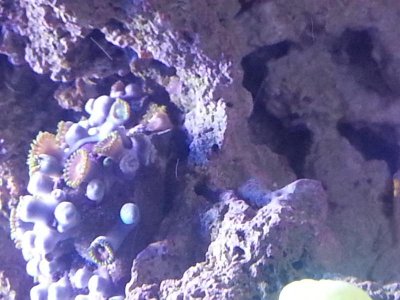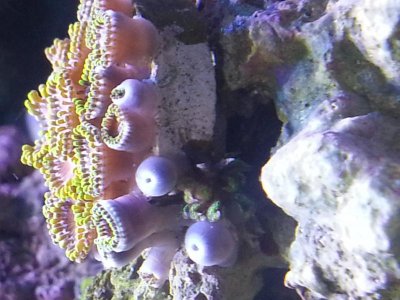this may help some people , ive gotten dozens of reefers to use method and it works.
remember to dip all your corals , lfs cant be responsible for pests its up to the consumer.
adult nudis themselves are slow to eat, easy to find and cant grow to adult stages faster then we can pick them out or dip them.
now the eggs.....are virtually indestructable.....too hidden between and around polyp stalks for predators to find, and then too small once they start to feed for us to find as well.
basically remove all you can, youll find them at night and they are easy to spot.
dip all your colonies or frags , then manually inspect for any stunned nudis that may be holding on and pick off any eggs you see.
this needs to be done weekly for a few weeks or its a lost battle, you also should put your zoas either in qt or a acclimation basket while your doing the treatments, putting them back in your display just gives the adults new places to hide during the day.
add fish that scare and eat the nudis.....wrasses are your friend if your keeping zoas and palys.
zoanthid nudis only eat zoanthids, but remember most of what we call palys are actually zoas.
heres your routine in short:
day1/week1:
remove all zoas from your tank
remove all visible adults and dip the zoas
reinspect after dipping ...important to remove eggs(lots of different dips i use coral rx)
place in a qt tank or basket off your sand and rocks.
add a wrasse or a couple depending on your tank size.....yellow corris and melanarus is what i use and are preferred.
every couple of days look at them at night or early morning and look for any babies that you may be able to see.
day 1 /week 2
look for adults and remove
dip your zoas....remove any left over adults and eggs
every coule of days look at them at night or early morning and look for any babies that you may be able to see.
day 1 week three:
pest control should be close to be had now so time to do the final dip and thorough inspection.
remove all your zoas and dip them in a flatworm exit solution and followed by a lengthly dip in coral rx .
use a magnifying glass to inspect the polyp stalks for eggs under a bright light(halides work great)
theres alot of different approaches you can take but this routine works well , some people say freshwater and h2o2 work but i use both all the time and freshwater baths are a bit harsh and h2o2 does not compare to coral rx IMO i see nudis sliding around in h2o2 for long periods of time while the coral rx when blasted at them stuns them within minutes. its important to note coral rx stunns the nudis....it may kill some but not 100% all of them , you need to use a turkey baster and blow in between the polyps...be rough they hold on tight
when your looking for them at night time remember that zoa nudis can change color to match the polyps they are eating , during the day this makes it hard but at night you can lightly touch each polyp with tweasers and then the bright nudis are visible...use a turkey baster to suck them up also using a actinic light helps spot the bright nudis
on that last note , always dip your corals for pests , but with zoanthids they should have a qt period unless your absolutely sure no nudis or other pests are there , the polyps and the rocks make for great hiding places and since zoas dont eat live prey of size they can hide there safely.
good luck ,if you stick to it they arnt hard to get rid of.
hope this helps.
cheers
denny


